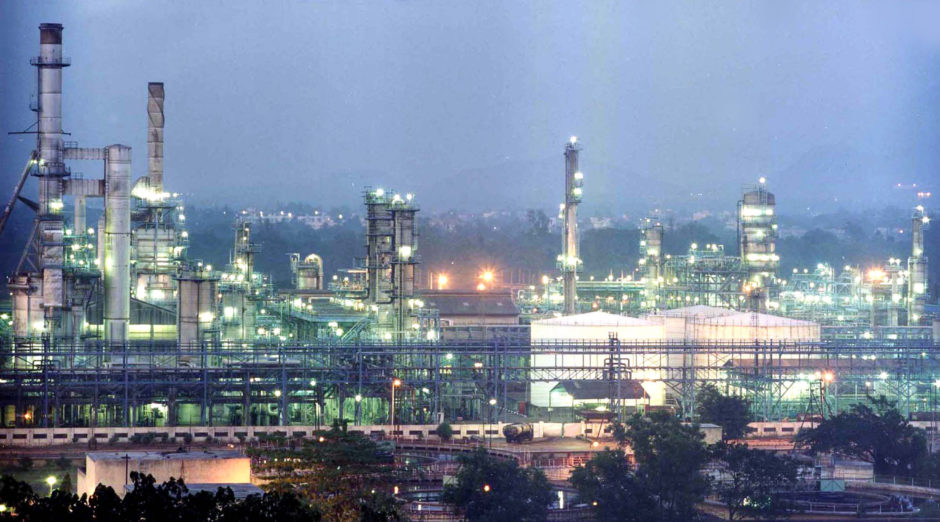
Saudi Aramco’s proposed purchase of part of India’s Reliance Industries Ltd. will allow it to regain its grip on the world’s fastest-growing oil market where suppliers including the U.S. and Russia are making inroads.
Aramco’s plan to buy 20% of the oil-to-chemicals business of Reliance — which includes the world’s biggest refining complex at Jamnagar on India’s west coast — comes with an assurance to buy half a million barrels a day of the kingdom’s crude on a long-term basis. That’s around 25 million tons a year and will allow Saudi Arabia to easily reclaim the top supplier spot from Iraq.
Asia has traditionally bought the bulk of its oil from the Middle East, but that’s changing as the U.S. ramps up shale exports, Russia looks for new customers and Saudi Arabia leads OPEC efforts to curb production to prop up prices. American sanctions on Iran and Venezuela are also taking barrels off the market and providing an opening for new suppliers.
“The deal definitely gives Aramco access in a market where they are facing competition from other producers,” said Sushant Gupta, director of refining and chemicals for Asia Pacific at energy consultancy Wood Mackenzie Ltd. in Singapore. “Incremental demand in Asia is being met more by other suppliers, particularly the U.S.”
India imports about 85% of its crude requirements and the International Energy Agency forecasts it will be the world’s fastest-growing oil consumer through 2040. The nation’s oil consumption will grow from less than 5 million barrels a day at present to 8.2 million by 2035, according to Wood Mackenzie.
In the shorter term, growth in Indian consumption will offset a slowdown elsewhere. The International Energy Agency last week trimmed global forecasts for oil-demand growth this year and next and warned it might cut estimates further due to the U.S.-China trade war. Indian demand-growth will rise to 225,000 barrels a day in 2020, from 170,000 this year, it said.
The tie-up will give the kingdom access to “what is widely expected to be the fastest growing refined oil product market over the next 20 years,” Sanford C. Bernstein analysts including Neil Beveridge said in an Aug. 12. note “For Reliance, it provides cash to fund expansion of their digital business and further expansion of downstream capacity with an experienced partner.”
The Saudi energy giant has been very active in bolstering its presence in Asia recently. It’s building a refinery in Indonesia with PT Pertamina and is planning a $6 billion expansion at its South Korean refining unit. Aramco has signed a deal to build a $10 billion refining and petrochemicals complex in China’s Liaoning province and a 300,000 barrels per day plant in Malaysia, half owned by the Saudi company, is set to start operations this year.
The U.S., which allowed global oil exports from the first time in 2015, shipped 6.4 million tons of oil to India in the financial year ending March 2019, making it the ninth-largest supplier. American oil will likely account for 8% to 9% of Asian imports in five years, said Wood Mackenzie’s Gupta.
Russian exports to India jumped fivefold to 3 million tons in the year ending March 2018 after Rosneft PJSC and partners including Trafigura Group acquired a 400,000-barrel-a-day refinery near the Jamnagar plant. Shipments declined to 2.2 million tons last year.
Iran was India’s third-biggest supplier in the last financial year, exporting around 24 million tons. However, imports from Iran have dropped to zero in the last two months after the end of exemptions from U.S. sanctions in May. Venezuelan shipments have been falling for the last four years and are likely to keep dropping as the nation struggles to cope with White House penalties.
The Aramco deal will also help Reliance secure crude supplies. “In the current volatile geopolitical world, where we can’t buy from Iran, Venezuela is in trouble,” Reliance Executive Director P.M.S. Prasad told reporters in Mumbai this week. “Here is someone sitting three and half days away, and they offer a bouquet of crude.”